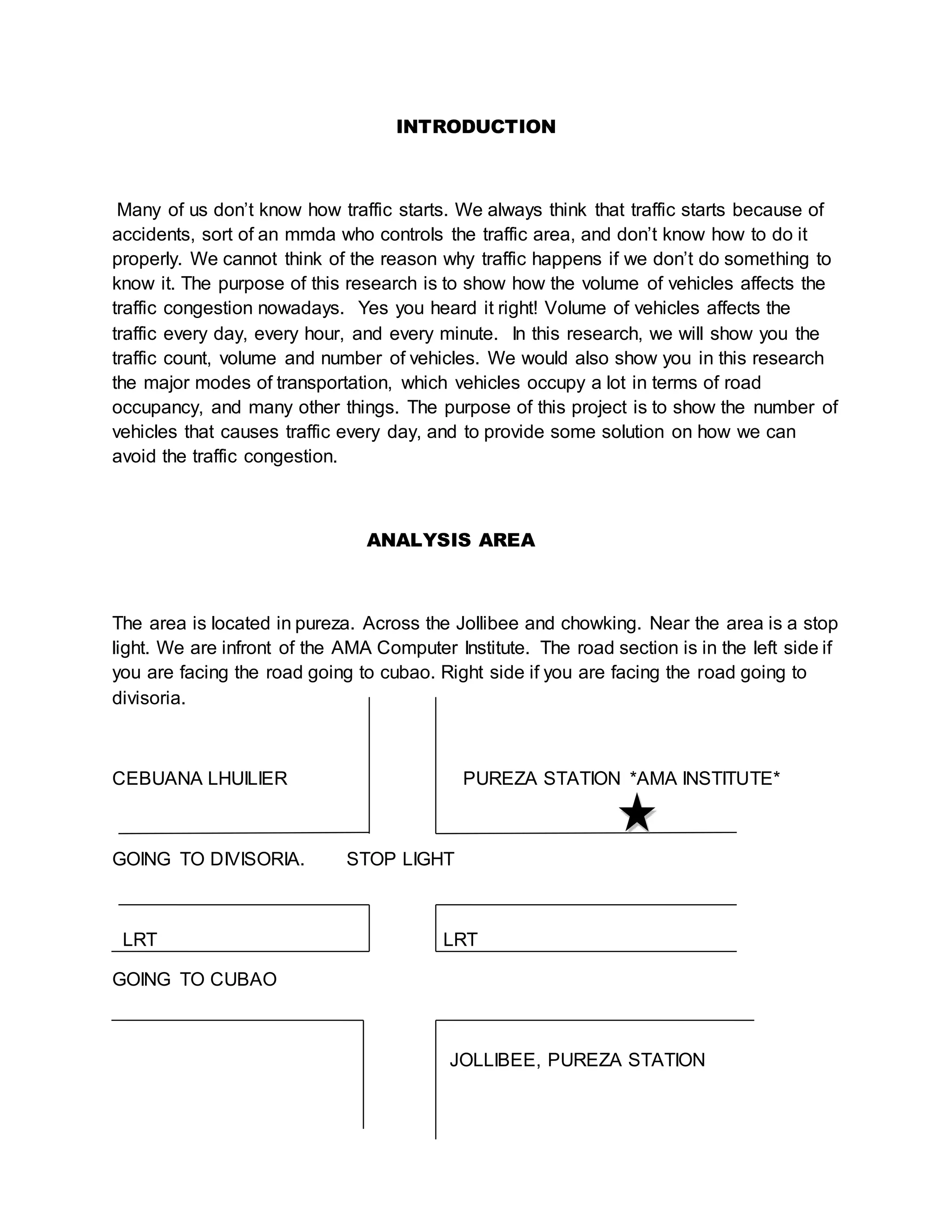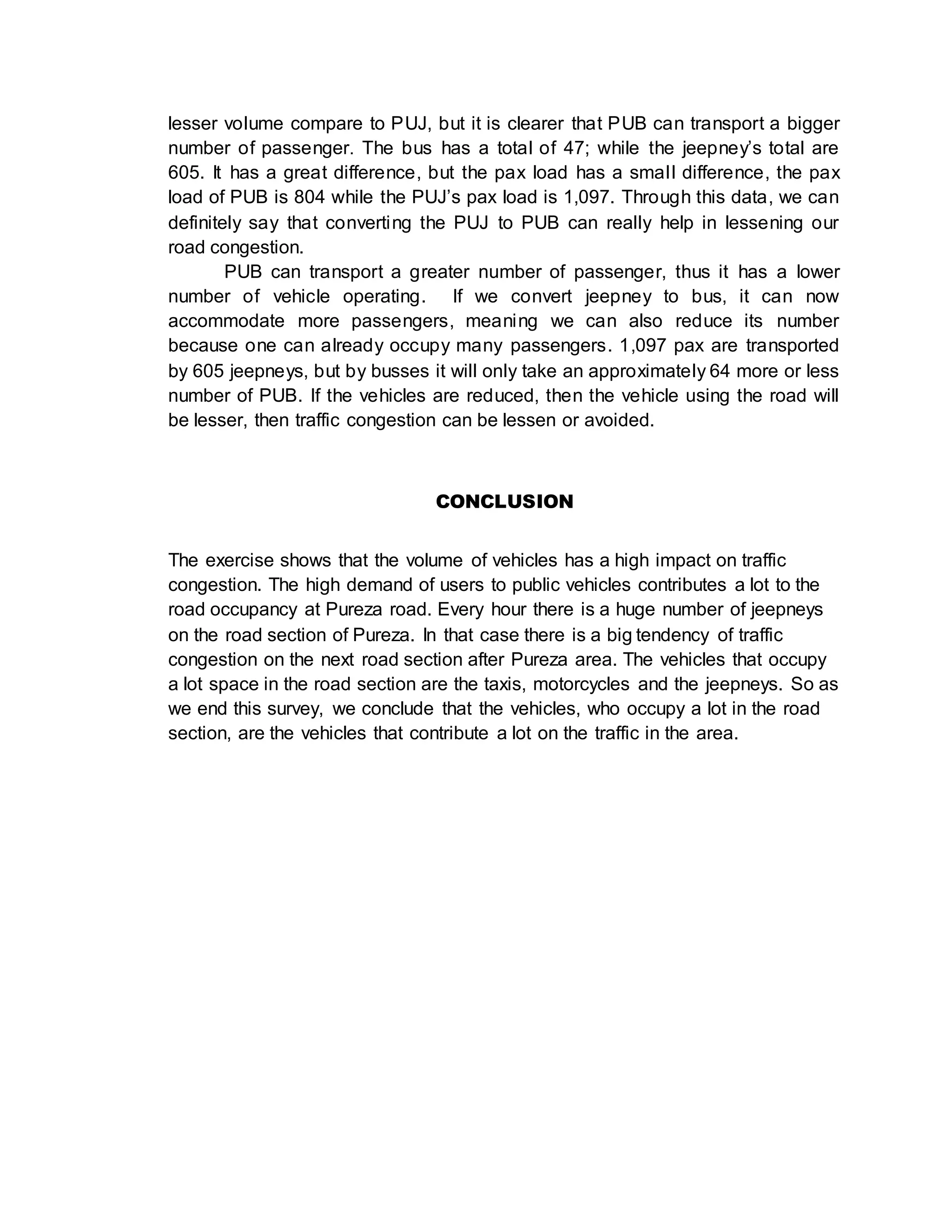1) The document analyzes road traffic data that was collected through surveys conducted at Pureza Station near AMA Institute.
2) The surveys found that jeepneys were the most dominant mode of transportation in terms of road occupancy. They accounted for 605 vehicles compared to 47 buses.
3) Converting 60% of jeepneys to buses could help reduce traffic congestion by allowing more passengers per vehicle, reducing the total number of vehicles on the road.





![ANALYSIS OF SURVEY
a.)What are the major modes of transport along the section in terms of
vehicular volume?
The usual modes of transport that covers the section are the motors, jeepneys,
and Taxi’s.
b.) In terms of road occupancy, what are the dominant modes of
transport?
Jeepneys are the most dominant mode of transport in the area.
c. In terms of passenger volume, what is the ratio of public transport
riders to private vehicle users?
The ratio of public transport users to private vehicle users is 2,563:6,943 or
approximately 1:3. This result can show that compared to the riders of our public
transport, private vehicle riders have a greater number.
d. What is the Vehicle Capacity Ratio (VCR) of the road section? In
your observation, what is the degree of traffic congestion of the
section?
The VCR of the road section is 884 vehicles per hour. There are a total of 7,072
vehicles that uses the road on the 2 hour of our observation. The road section has 4
lanes. To get the VCR we divide the total number of vehicle to the number of lanes and
number of hours [v / (L x h)].
Based on our observation there is appropriate or considerable traffic congestion.
Although there’s congestion the vehicles are still moving. So I think the degree of traffic
congestion is at moderate level.
e. If 60% of the PUJ volume were converted to PUB what would be
the impact on the traffic condition of the section? Support your answer
with data.
If 60% of the PUJ will be converted to PUB, the traffic congestion will be
lesser. Based on the data we have PUB operating on our road section has a](https://image.slidesharecdn.com/transportation-data-analysis-and-interpretation-1-150305185507-conversion-gate01/75/Transportation-data-analysis-and-interpretation-1-6-2048.jpg)
